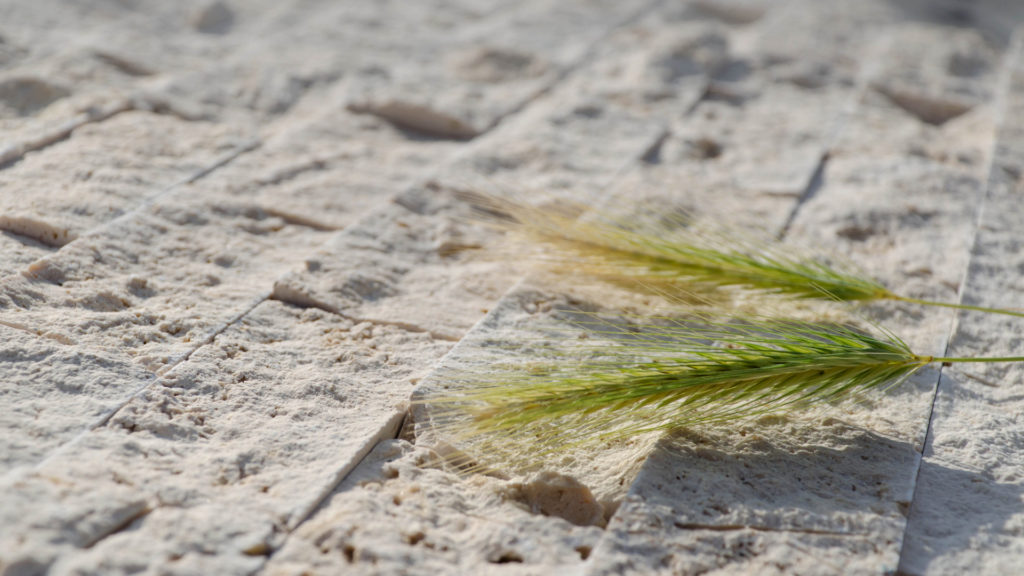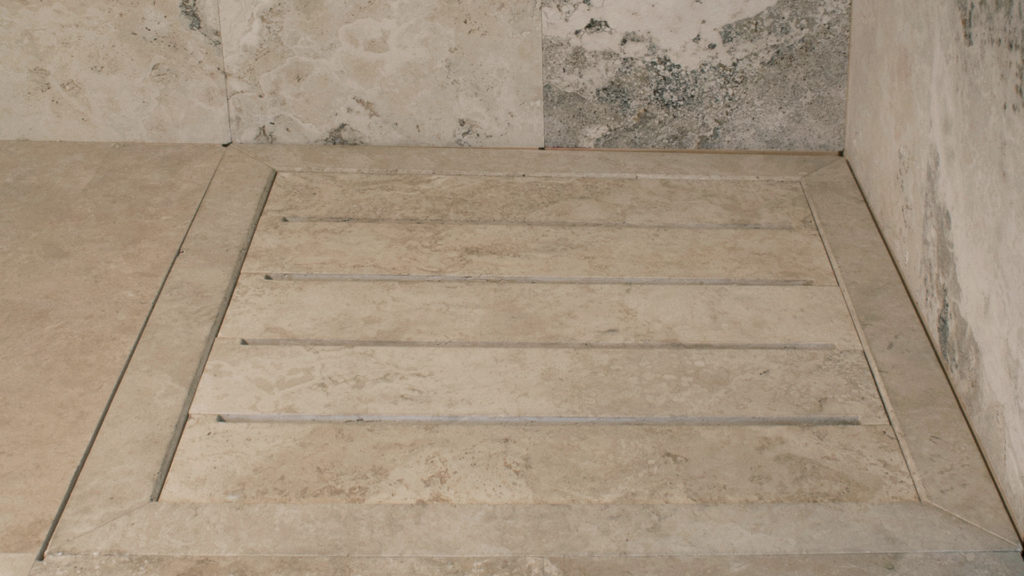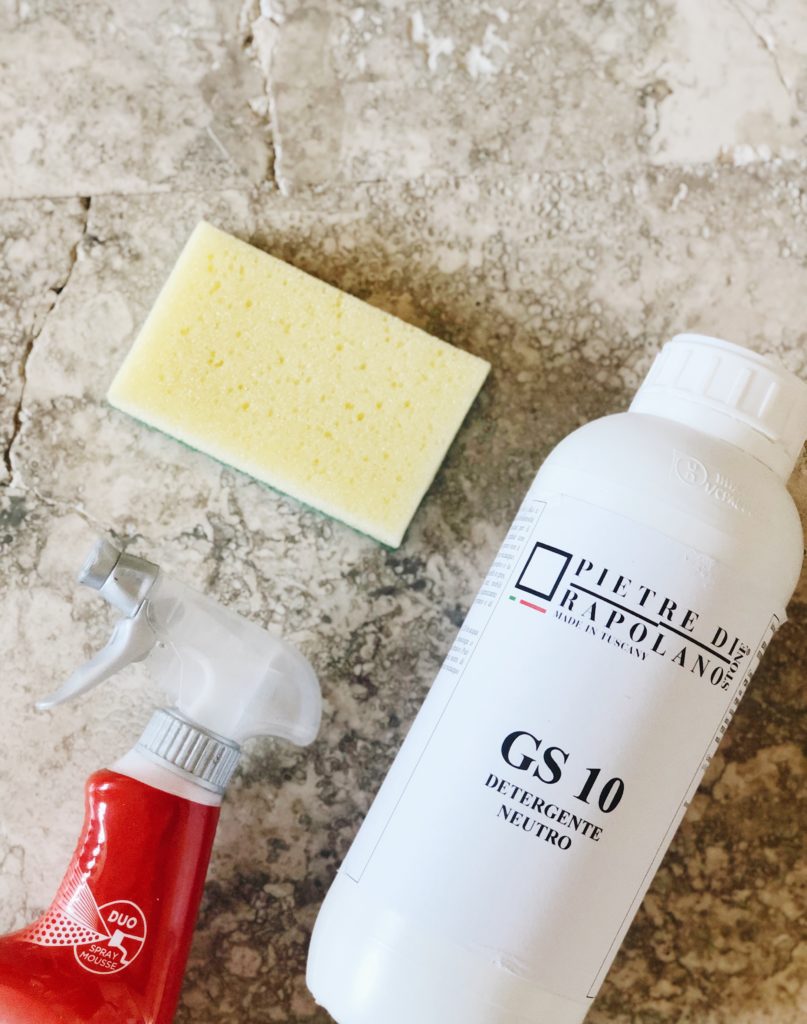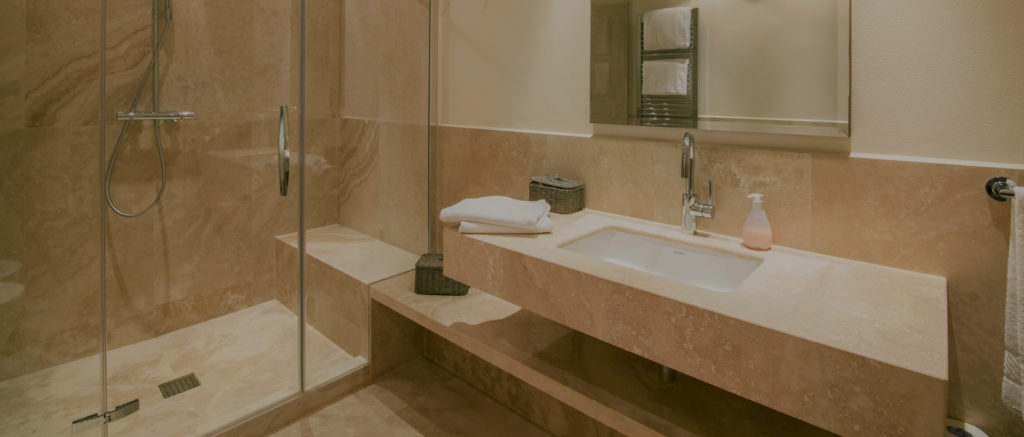Home ideas - 27 November 2018
How to clean travertine marble

Rapolano stone is, geologically speaking, a travertine and therefore, as far as its technical characteristics and cleaning problems are concerned, the rules, precautions and tips for cleaning travertine should be taken into account.
This particular type of marble is primarily made up of calcium carbonate and the only thing that can seriously damage it is acid, which reacts with the calcium carbonate and dissolves it.
So, when cleaning travertine, you must use non-acidic detergents.
This is the only real precaution to follow when answering the question “How to clean travertine.” Neutral soaps of any kind are perfectly fine for “normal” cleaning of a travertine surface.

However, travertine is a material that will tend (albeit very slightly) to absorb any greasy, oily, or coloured substances that may fall on it.
But remember, travertine is not a particularly absorbent material and this specific nature will protect it from external aggression. In addition, its “cloudy” colouring will help to conceal any shading that could be caused by contact with oily substances.

In any case, if deeper cleaning is necessary, we recommend using specific products such as our travertine cleaner.
A preventive waterproofing treatment is also useful in this respect for the surface of travertine marble.
Another issue related to the cleaning of travertine, especially when placed outdoors, are its characteristic holes.
Travertine is known to have holes of various sizes on its surface.
It is obvious that in external structures such as floors, sills, thresholds, stairs, and swimming pool edges made of travertine, these holes will tend to collect dirt such as soil, dust, and leaf residues.
So, when asked how to clean travertine sills, our suggestion is to use a mop and water or, for larger surfaces, a pressure washer.
If, however, mould has formed – which does not depend on the type of material but on the type of environment in which it is found (for example, an outdoor area in the shade or a shower in a damp environment) –- you will need to use bleach to clean the travertine, spraying the mouldy surface and leaving it to act for a few hours. This step is necessary, so don’t be afraid of damaging the surface. As already mentioned, it is the acidity of the detergent that causes problems and bleach is not acidic. At this point, a mop, water, and/or pressure washer will remove the mould residue completely.

For blackened travertine, remember that it may have taken on this colour due to dirt or mould.
The above tips will help to clean up blackened travertine.
The question “How to clean travertine with moss” is also answered by using a mop and possibly a pressure washer.
For other stains on travertine, such as paint, writing, graffiti, etc., specific substances capable of dissolving these elements must be identified on a case-by-case basis.


